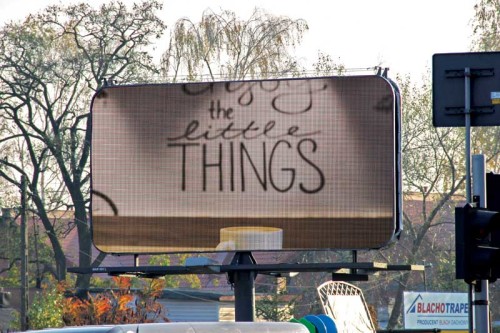What to do
As mentioned, the operator of an atypical screen cannot turn to today’s state-of-the-art software for standard screens, but settling for LED sign control software is not a viable alternative when most such packages are outdated, having been programmed 20 years ago. Further, there is a popular misconception among sign shop owners that an LED sign can only work with whatever software comes with it. In 99 per cent of cases, this is simply not true.
Controllers and media players, after all, are really just computers. Any compatible software can
thus be installed to replace the original setup.
The manufacturers of LED displays are not end users and lack the motivation to find these alternative software options, so it is up to sign shop owners to actively research such resources—and it is in their interest to do so. A better software option will make their job easier, their screens more effective and their customers better-satisfied, leading to fewer support calls and more referrals.
Compatibility
Most LED sign control software options are marketed as compatible with only one brand of controller, even if that is not necessarily the case. Hence, it is in the user’s interests to test many different combinations to determine which work best. And fortunately, some software options are compatible with all control systems and clear marketed as such.
Design
One of the reasons most LED sign control software packages are poorly designed is they have been developed by the electronics manufacturers themselves, rather than by software engineers. The customer will benefit more from software that is intuitive to use, with a clear interface, and takes advantage of current technological advances in the digital signage industry, so as to achieve the strongest possible return on investment (ROI).

If the software cannot match each ‘virtual dot’ of an image to the pixels on a billboard, then some content may be left off-screen.
Access
Another factor to consider is breadth of access. As mentioned earlier, most LED sign software options were developed 20 years ago and restrict control to a single computer that usually needs to be physically connected via cable to the actual sign.
As elsewhere in the digital sign industry, LED sign software should instead be web-based, allowing users to create, modify and control on-screen content from any Internet-connected device.
Similarly, older software may impose restrictions on the type of computer that can run the software, e.g. a Windows PC. Today, there is no reason for such specifications. LED sign software should be compatible with any computer device running any operating system (OS).
Scalability
Another problem with older software that requires a physical connection between computer and sign is this makes it impossible to scale up the system to control multiple signs in multiple locations from one central device.
The advent of web-based software allows marketing departments, sign owners and others to control on-screen content for one or multiple signs from anywhere, using the same cloud-based software account.
Customization
Most of today’s LED sign software packages, whether free or paid, offer a one-size-fits-all model. The more expensive they are, the more overloaded they tend to be with unnecessary extra features—and the free options are usually too bare-bones, with no opportunity for additional features if needed.
A ‘tailored solution’ therefore requires software that allows for many different possible customizations, such as reports and apps, and allows the user to choose those that are most practical for his/her business needs.
The time is nigh
For all of these reasons, it is time for software in the LED display market to catch up with software in the broader digital signage industry. An affordable, well-designed CMS with an intuitive interface is key in helping ensure a dynamic sign is used to its fullest potential. This is no longer an unreasonable demand, but rather a must in today’s competitive sign industry.
Maria Tofalo is marketing manager for Screenhub, which develops web-based digital signage content design and management software-as-a-service (SaaS). For more information, visit www.screenhub.com.





